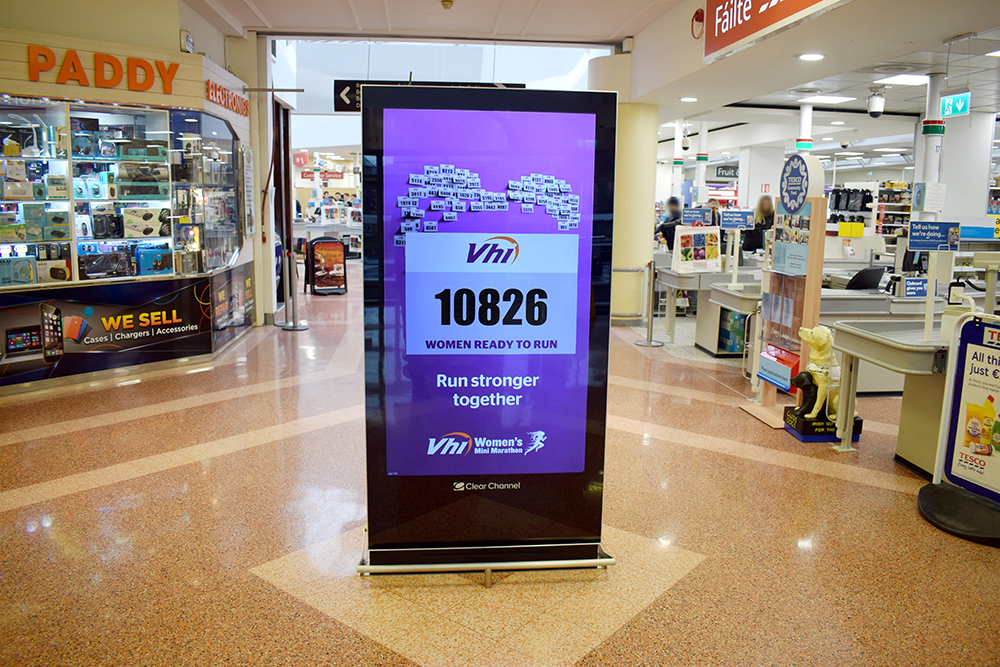Digital-out-of-home advertising continues to speak to us in the most innovative language that everyone can understand and comprehend. That is why companies approach DOOH product marketing with excitement and now one plays it safe. DOOH is highly impactful, remarkably creative and, unlike most of the traditional ways of advertising, is literally impossible to block or ignore. Thus we’ve figured it’s just the right time to make the top 5 list and pinpoint the times DOOH helped companies reinvent their marketing. Listed below are the most inspiring, engaging and entertaining ways DOOH is used for effective marketing.
A friendly warning: please refrain from any marketing reinventing through DOOH until you’ve found a digital signage software provider that fits your brand. Establishing a fully-functional digital signage network is a challenge, so my suggestion is: make a 5-10 key qualities list for DS and go from there. Honestly, there are staple requirements that will help you to make the most out of each display. Your DS soft should be able to play key media formats, integrate another innovative tech, and play interactive content. DS should allow you to seamlessly run a growing network, have a good health system in place, etc. The designs have to be exciting and up-to-date, and there is always a very important matter of quality customer support. Whatever it is for you – list the key requirements and start your search. We’ve spent a good couple of months searching and testing out DS soft, fortunately, we are pretty happy with our Kitcast digital signage software (check them out at https://kitcast.tv/).
Best Examples of DOOH Advertising:
i) That time we all wanted a Burger King Whopper. Calling me a Burger King fan would be a bit of a stretch, what I am though is a huge fan of their marketing. So, let’s talk about the impressive BK DOOH campaign, their digital-out-of-home pièce de résistance called “The traffic jam whopper”. The amazing never before attempted DOOH campaign in Mexico aimed to end hunger in all traffic jams. They used dynamic DOOH and promoted services in gridlocks bases on real-life data by locating the potential buyers in traffic. Traffic info and real-time data analysis were used to adjust the content of the billboards. Burger King ran messages displaying the time left in traffic and tracked and displayed time left before receiving the order. Additionally, mobile ads with campaign promotion were sent out as soon as cars entered traffic and were in close proximity to billboards. The cars were tracked with Google maps API to pinpoint the exact car position in gridlock. This was the first time ever anyone has attempted a delivery to drivers on the move and it was an outstanding success: the campaign boosted Burger King’s delivery service and the orders for food delivery increased by unbelievable 63%.
ii) That time Kylie Jenner won programmatic. The latest Kylie Jenner’s billboard campaign was an ode to programmatic DOOH and has finally shown all of its power. I’m pretty sure that the new Kylie Skin ad campaign was to biggest programmatic campaign to date. Just imagine, it took 1 300 screens in more than one thousand cities across the US to make this digital-out-of-home marketing campaign a success. But, hold your horses, we haven’t gotten to the most impressive part yet! It has been reported that the whole programmatic digital out-of-home campaign was carried out with unimaginable before speed: it was conceived and made public across the US all in just under a week. From idea to Kylie’s face appearing everywhere – from the Times Square to a shopping mall in West Covina – all in just under a week. Jonathan Gudai, Adomni’s CEO said, and I fully agree, that Kylie Skin was absolutely groundbreaking DOOH marketing campaign: “To run that many ads on that many boards, with that minimal effort, is truly a remarkable thing” – stated Gudai.
iii) That time McDonald’s teamed up with Met Office. It is getting harder to impress and engage consumers, but, last year Leo Burnett came out with a pretty amazing and a rather simple way to grab people’s attention with a DOOH marketing campaign for McDonald’s. They’ve presented a digital outdoor campaign that turned McDonald’s famous and highly recognizable menu items into weather icons of the five-day weather forecast and brought all of it to life on giant screens.
iv) That time Pepsi brought us the HD live-feed AR 3D “Unbelievable bus shelter” DOOH campaign to scare the life out of us on the way to work. This award-winning campaign is hard to forget: Pepsi MAX has shown us an amazing and unbelievable experience with their innovative DOOH. Life-like lions, aliens and UFO’s, meteors, and people getting dragged underground by octopuses were all appearing before people’s eyes on a morning bus stop. We urge you to watch the promo video for Pepsi MAX – more than 8 000 000 people did! It is one of the most watched ads on YouTube. It was high-tech, creative, entertaining and to this day one of the most unforgettable DOOH marketing campaigns out there.
v) That time the Emoji Movie digital-out-of-home won London. Let’s end our list with a really bad movie and a remarkably great augmented reality and DOOH marketing campaign. Sony Pictures has brought a very creative and fun campaign to the streets of London with just a billboard, augmented reality and facial recognition soft. Advanced soft was used to turn the passersby’s into emoticons, it was able to identify gender, emotions and facial expressions with a very impressive speed thus managing to bring AR experience to the high-foot traffic street. The campaign’s reach and “shareability” was up there with the best of them.
Read Also:






















